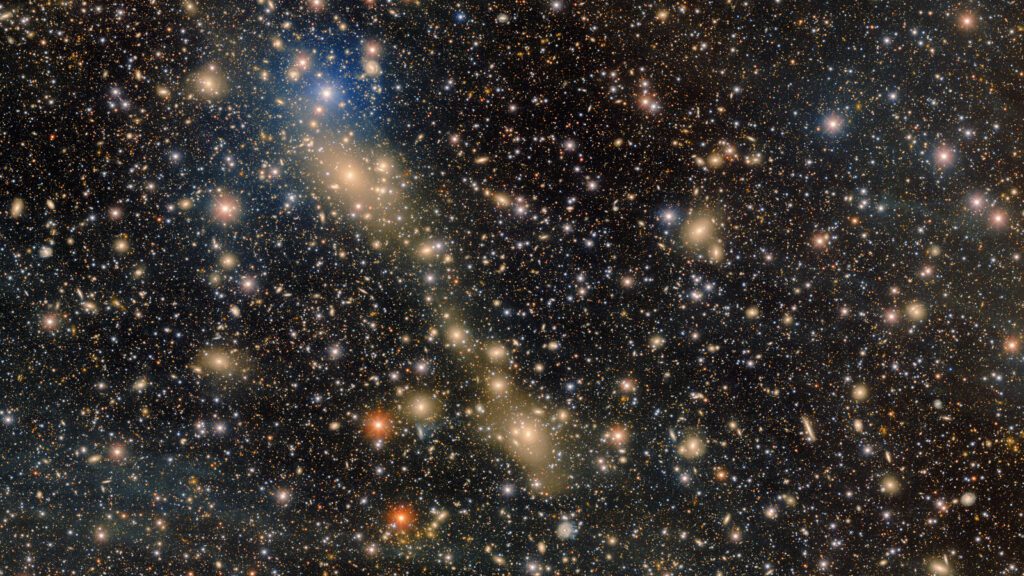Astronomers have identified two massive galaxies, approximately 700 million light-years away, engaged in a gravitational tug of war, revealing a faint stream of stars being pulled between them. Observations of the Galaxy Cluster Abell 3667 showed a one million-year-old bridge of light connecting these galaxies, stemming from two smaller clusters that began merging about a billion years ago.
This discovery marks the first time such a significant feature has been observed in a local galaxy cluster. Ph.D. candidate Anthony Englert from Brown University, who led the study, noted the surprising clarity of the faint astronomical feature. The bridge is created by diffuse light from stars stripped from galaxies by intense gravitational forces.
Using 28 hours of stacked observations from the Dark Energy Camera at the Cerro Tololo Inter-American Observatory in Chile, the team was able to capture the bridge. The upper end features the lenticular galaxy IC 4965, while the lower end showcases Jo171, known as the “jellyfish galaxy” for its distinctive gas tendril. As Jo171 merges with Abell 3667, it loses gas and halts star formation in certain structures.
Moreover, this light bridge provides insights into the distribution of dark matter, which makes up about 80% of the universe’s mass. The study highlights that light within these clusters tends to align with dark matter, offering an indirect method to map its distribution.
This research, published on August 5 in the Astrophysical Journal, underscores the potential future discoveries expected from the Vera C. Rubin Observatory, set to begin full operations soon, leveraging advanced technology to explore intergalactic clusters in unprecedented detail.
Source link


